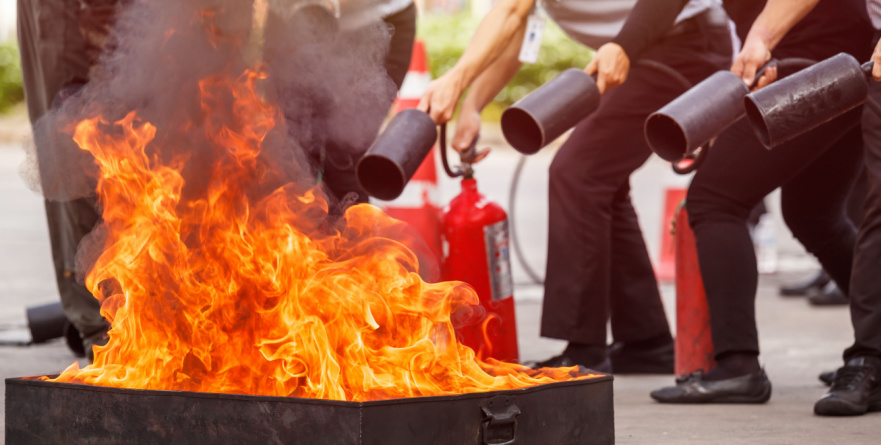Fire Prevention Week established in remembrance of the Great Chicago Fire of 1871 and now recognized by Canada's Governor General, continues to play a pivotal role in highlighting the importance of fire safety across the country.
This national initiative unites communities, schools, businesses, local governments, and fire departments to raise awareness about the dangers of fire and the steps everyone can take to prevent them.
By emphasizing proactive safety practices – like testing smoke alarms, planning escape routes, and reviewing emergency procedures – Fire Prevention Week helps reduce fire-related incidents, adapt to evolving fire risks, and ensure communities are equipped with the latest safety information to safeguard lives and property.
The Importance of Fire Prevention Week
Preventing fires is everyone’s responsibility, and every second counts during an emergency. The difference between containing a small fire and facing tragedy often comes down to preparation. Children, adults, and seniors alike are at risk when fires occur, making it crucial that every household member knows the basics of fire safety and how to operate a fire extinguisher confidently.
Fire Safety Tips at Home
The number one cause of kitchen fires continues to be unattended cooking. Keep your household safe by following these simple yet essential tips:
- Stay alert while cooking and keep a close eye on what you’re grilling, boiling, baking, broiling, or frying. If you must leave the kitchen, turn off the stove and remove any pots or pans from the burners.
- Check on your food regularly when baking, roasting, or simmering. If you’re easily distracted, set a timer to remind you.
- Turn pot and pan handles inward and keep a lid nearby in case of a grease fire. If one starts, carefully cover it, turn off the burner, leave your home, and call 911.
- Keep flammable items away from your stove, such as oven mitts, utensils, paper towels, and curtains.
- Create a kid- and pet-free zone around your cooking area to avoid accidents.
- Test your smoke alarms monthly to ensure they’re working correctly.
- Develop and practice a home escape plan so every family member knows what to do in case of a fire.
- Learn how to use a fire extinguisher properly before you need it – hands-on training can make all the difference.
Fire Safety Tips in the Workplace
A fire can happen anywhere, and some workplaces are more prone to risk than others. Here are some essential Fire Safety Tips in the Workplace to help reduce potential hazards:
- Smoke only in designated areas, and always use large, non-tip ashtrays. Never empty ashes into wastebaskets.
- Use CSA-approved power bars and avoid running extension cords under rugs or across doorways.
- Plug only one power bar into each outlet to prevent overloading.
- Inspect electrical cords regularly and replace any that are cracked, frayed, or damaged.
- Avoid “octopus wiring” by not connecting multiple cords or devices into one outlet.
- Use CSA-approved appliances throughout your workplace.
- Ensure proper ventilation for heaters, computers, copiers, and other electrical equipment.
- Keep appliances clear of combustible materials such as paper, fabric, or cleaning products.
- Turn off or unplug all electronics at the end of the workday.
- Keep fire extinguishers accessible and ensure all employees receive training on how to use them safely.
AIP Fire Extinguisher Training
Recognizing the vital role that fire extinguishers play in both home and workplace safety, AIP’s Fire Extinguisher with Live Fire Training course provides an essential, hands-on learning experience for everyone.
This comprehensive course aligns with – and exceeds – the NFPA Standard, giving participants a deep understanding of fire dynamics and extinguisher use. With Canada continuing to experience avoidable injuries, fatalities, and property losses due to fire, this four-hour course combines theoretical education with live practice.
Participants gain the confidence and skills to:
- Identify different types of fires and the appropriate extinguishers to use
- Master fire-fighting techniques safely and effectively
- Conduct proper inspections and maintenance of fire extinguishers
Ultimately, this training empowers individuals to act decisively in emergencies, protecting both lives and property.
Protecting Your Community | One Day at A Time
Every small action can make a big difference in preventing fires. Whether at home or at work, taking time to review your fire safety plan, test your smoke alarms, and learn how to use an extinguisher properly can save lives.
Connect with AIP today to learn more about our hands-on Fire Extinguisher with Live Fire Training – and take the next step toward keeping your family, team, and community safe.

